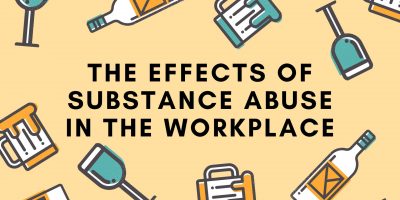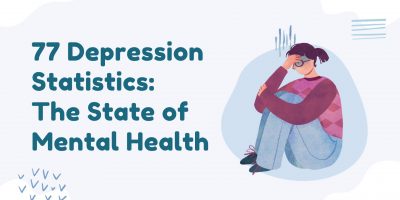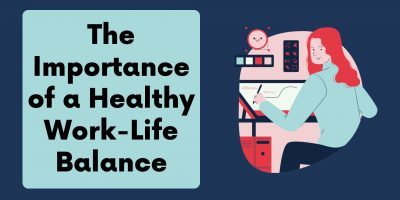
The Effects of Substance Abuse in the Workplace
From decreased productivity to poor workplace relationships – gain insights on recognizing, addressing, and mitigating the consequences of substance abuse at work.


HR manager at Joloda Hydraroll

Founder and Director of TailoredPay

Co-owner and Content Manager of Damien McEvoy Plumbing

Director of the Nepal Hiking Team

Managing Director of The HR Suite

Managing Director of H-Training

CEO and Editor-in-Chief of Venture Smarter

Attorney & Co-Owner at KFB Law
More than half of the adult US population is feeling lonely.
The loneliness epidemic is on the rise, affecting people of all ages and demographic groups, and is incredibly challenging when set in the work environment.
We’ve tried to tackle this issue with experts in their fields, sharing their experiences and expertise on addressing loneliness in the workplace.
But to better understand what loneliness means today and how it impacts our behavioral and mental health, one must take a few steps back.
Even since prehistoric times, people tended to gather around in groups. These prehistoric societies ensured food, protection, care, and social networks for their members. Or simply put, the bonds our ancestors created translated to their chance to adapt and survive in a harsh environment.
Fast forward to today’s setting, and nothing has changed.
Humans evolved to be social and need interpersonal connections to cooperate, thrive, and survive.
Thus, when people are separated from their social group or in a group of strangers, that’s enough reason to trigger an emergency response in their bodies. This hypervigilant nature of loneliness is central to numerous studies led by John Cacioppo, one of the founders of social neuroscience.
When tested by anthropologists, his evolutionary theory of loneliness not only showcased this fight-or-flight reaction loneliness spurs in the body, but it also tied its presence with feelings of anxiety and other psychological and physical symptoms in humans.
The term “loneliness” didn’t always have the same feel as today.
In the past, two terms were used interchangeably with the meaning “alone” – oneliness and solitude (from the Latin “solus”.) Both refer to the condition of being solitary.
Even though literature works and an avid naturalist hinted at the usage of the word loneliness as we know it today, it began appearing more frequently in English around 1800.
Unsurprisingly, this new meaning of loneliness collided with the emerging changes in cultural values, the rapid economic development led by industrialization, religion’s declining influence, and a turn towards individualism.
The growing focus on the individual was the opposite of the established traditional society’s collectiveness and togetherness.
To sum up the different looks and definitions of loneliness, it can be described as subjective, unpleasant feelings of loss or lack due to the unaddressed need for belonging and companionship.
Furthermore, the psychological definition of loneliness comprises three different types of it, including:
Yet, regardless of the type of loneliness they experience, thousands of people globally are classified as lonely. Hence, a third of adults worldwide (33%) feel lonely.
So, is loneliness an epidemic?
The rising rates of lonely people can easily translate into a loneliness epidemic, with more than half the population (58%) of US adults feeling lonely, according to research from Morning Consult and Cigna.
Compared with the pre-pandemic research from Cigna, the data of lonely people in the US shows consistency. Still, the COVID-19 pandemic greatly impacted mental health, especially among those coping with loneliness.
Research by the journal American Psychologist reported a 5% increase in the prevalence of loneliness during the pandemic, and up to 72% of people felt a worsening of their psychological health due to pandemic measures.
The oxymoron phrase social distancing used to describe one of the measures to help stop the spread of the virus hints at the reasons behind these staggering numbers.
Thus, in the wake of the Covid-19 pandemic, those already living alone by choice expressed 61% higher loneliness rates. Those living alone, not by choice, experienced seven times higher rates of loneliness.
These rates weren’t only high among older people.
A study by Making Caring Common revealed that 61% of respondents aged 18 to 25 reported feeling “serious loneliness.”
The aftermath of the pandemic showed almost unchanged loneliness rates among US citizens. However, those numbers change depending on various demographic and personal circumstances and factors, affecting certain groups of people more than others.
Pre-pandemic and after-pandemic studies showed a higher loneliness rate among younger than middle-aged people.
BBC’s Loneliness Experiment backs this with data: up to 40% of respondents aged 16 to 24 felt very often lonely compared to 27% of respondents over 75 years.
These high levels of loneliness affected young people from various countries, backgrounds, and genders.
Hence, the loneliness epidemic affected most Millennials and Gen Z.
The younger respondents were also those feeling mostly ashamed regarding feelings of loneliness due to stigma associated with it. But the stigma and loneliness levels went down with the respondents’ age.
People from underrepresented racial and ethnic groups are more likely to feel lonely. In fact, 75% of Hispanic and 68% of Black/African American adults reported loneliness.
Moreover, besides the minority status, cultural differences can also affect loneliness rates. Respondents from individualistic cultures were shown to be more lonely than those from a collectivist culture.
Both men and women have almost the equivalent likelihood of feeling lonely.
That rate equals 57% of men and 59% of women in the US. Nevertheless, women felt more ashamed than men about feeling lonely. That is, according to a Gender Differences in Loneliness study, primarily because women were more comfortable acknowledging their feelings of loneliness.
But studies show that men and women react differently to addressing loneliness, leading to younger, middle-aged men being the loneliest than ever before.
Gay and bisexual respondents showed higher rates of loneliness, especially when they felt discriminated against. An LGBTQ+ Well-being Report found that before the lockdown, 21% of LGBTQ+ people felt lonely, which rose to 56% during the lockdown.
These rates are even higher for younger people – 67% of LGBTQ+ people under 18 reported feeling lonely “very often” or “every day” during the lockdown.

The loneliness epidemic can be detrimental to physical and mental health, mainly by increasing the risks or worsening the symptoms of existing conditions.
And while most of the health risks are tightly connected to individuals older than 50, immigrants and LGBTQ+ people are also at a higher risk of developing health problems due to loneliness.
Some of those physical and mental health issues include:
Loneliness doesn’t spare anyone, including younger generations, parents with children (primarily single parents), as well as underrepresented members of the community.
It also affects workers, resulting in high rates of absenteeism and productivity losses that harm employees and organizations.
Therefore, dealing with loneliness is not only a private matter but also a social issue.
The risks mentioned above translate into millions of dollars in hospital bills.
But the costs of loneliness can be minimized by offering treatment and care for older people, investing in preventative medicine, and introducing programs, helplines, and initiatives that support those in need.
And while it’s the public’s health turn to find solutions for preventing and dealing with loneliness globally, governments worldwide understand the gravity of the loneliness pandemic. So, today, both UK and Japan have introduced ministers of loneliness to tackle this public health issue.
The workplace can sometimes be a trigger for employee stress. And if it’s a lonely place, too, the impact on the individual and the organization will eventually become apparent.
In 2022, a study on “The Effects of Workplace Loneliness” was published in the MDPI Journal’s Special Issue. It showed that employees who feel lonely at work want to detach themselves from their jobs to recover psychologically. Or in short, employees were trying to overcome unpleasant feelings by avoiding their jobs.
The study also showed that experiencing loneliness in the workplace led to emotional exhaustion, psychological detachment, and discontent, which turned aloneness into a risk factor.
When three out of five employees in the US are lonely, and one of ten says their work is of lower quality when they feel like this, it’s simple math to see the effect that can have on an organization. The results are also unfavorable for turnover because lonely workers consider quitting twice as much.
Thus, the numbers paint a clear picture of the loneliness epidemic in the workplace. And as is the case in most companies, the HR professionals are the ones that see this issue up close and usually have to come up with a solution.
Wendy Makinson, the HR manager at Joloda Hydraroll, explained this very concisely: “A poll carried out in the UK in 2022 found that around 20% of employees feel lonely at work on a typical day, with those aged 24 or less most likely to fall into that category.
Loneliness can affect employees in any role or at any level of seniority.
Someone who feels lonely can be surrounded by people but feel detached and isolated.

An organization that embraces a culture where employees feel that they can express themselves, share ideas, and admit vulnerability can help employees feel psychologically safe. This can lead to greater interpersonal communication and less loneliness.
Employers can also use appraisals and 121s to encourage employees to discuss any struggles they may be experiencing.
Remote workers can be particularly susceptible to feeling lonely.
Putting in place activities and initiatives to reinforce colleague relationships can be especially beneficial for remote workers.”
In a society where organizational commitment is becoming a focal point for companies, the loneliness epidemic has practical implications for managers and HR teams. Ones that should be addressed sooner rather than later.

Of course, the cost of loneliness comes in many forms, but the goal for employers and employees should be to minimize it. Daniel Kroytor, the Founder and Director of TailoredPay, shared how his company solves this issue:
“Creating a culture of respect invites all team members to the table.
It can be easy to let team leaders and senior employees do all the talking during Zoom meets. However, this can cause other junior developers to feel unvalued, leading to low engagement and productivity and even loneliness. But being open to all team members’ experience levels, skills, and perspectives promotes a culture of mutual respect in a collaborative tech workspace.
This way, the whole team considers the problem and decides what to do, rather than one group making decisions. It also leverages individual strengths for particular tasks and allows team members to learn from each other.
For example, in our company, senior developers share their knowledge with more junior counterparts who, in turn, offer new approaches to processes from which everyone can benefit. And communicating respectfully when there are differences in opinions encourages everyone to be open to all viewpoints and suggestions.
So, when someone speaks up, encourage them to keep doing so by engaging with their ideas and asking questions. Doing so gives everyone a voice, making them feel valued. Creating a culture of respect is an authentic way to foster inclusion and keep the team working together.”
The more tangible evidence, or at least the financial evidence that can be measured, comes to approximately $154 billion annually, and that’s only from stress-related absenteeism. From lost productivity to increased healthcare costs, employers are in no position to ignore this issue.
Employers are a central piece of the puzzle.
Creating a safe environment requires time and effort and, in most cases, well-thought-out structures and practices that can enable the HR team to implement policies and provide benefits.
In fact, the lack of social fulfillment in the workplace reflects the company culture.
Thus, it’s only logical to assume that employees will feel less lonely if the culture becomes more inclusive, welcoming, and empathic. Training managers to offer positive reinforcement and encourage their teams to ask questions and take risks is crucial in reducing loneliness.
Other examples of how companies can address this issue are:
According to Matt Little, the Co-owner and Content Manager of Damien McEvoy Plumbing, employers are the ones in power to prevent or decrease loneliness’s impact on the team.
“As an entrepreneur, I believe that loneliness among workers has a real impact on their productivity and well-being as a whole. At the point when representatives feel desolate or separated from their partners, they might encounter lower inspiration, expanded pressure and uneasiness, and a decreased capacity to successfully impart.
Employers can address this problem by implementing strategies like providing opportunities for social events or team-building activities, promoting open communication and inclusivity in the workplace, and encouraging employees to interact socially.
In addition, employees who struggle with feelings of isolation or mental health issues can be helped by providing resources like counseling or programs for employee assistance.
Overall, employers need to be aware that loneliness in the workplace is a real problem that affects employees’ mental health and productivity. Employers have the power to boost employee morale and productivity as well as lower employee loneliness rates by fostering an inclusive and supportive work environment.”
The starting point is to evaluate the company’s state of social connection before offering any programs and drafting policies. And since every organization tends to be a bit unique in its operations, one solution will not work for all.
The insights that guide the changes should come from the employees and their own evaluation of their working experience.

Identifying lonely individuals at work is not always easy, and sometimes even the employees are unaware of their loneliness. However, that doesn’t change the fact that employers must first become aware of this issue if they hope to find a solution.
Hence, the most common signs managers and HR professionals should look for in a lonely employee are:
Some of the symptoms very closely relate to how depression and anxiety are displayed in the workplace. Thus, those in leadership positions need to know what to look for and then find a suitable way to approach the employee. It’s crucial to include this information in every manager’s training.
Balaram Thapa, the Director of the Nepal Hiking Team, summed it up: “I have seen examples in my workplace of how loneliness impacts employees.
As a travel company, we tend to see it manifest as a sort of “reverse culture shock” when our employees return home from their travels. They come back with interesting stories and experiences to share but often feel isolated and disconnected, especially if they haven’t had contact with family or friends while abroad.
We are also mindful of the fact that our staff can experience loneliness when working in remote locations, as we have offices spread across Nepal as well as in several other countries, so they may not be able to maintain connections with their work colleagues back at headquarters.
In response to this, we have instituted a number of activities and programs to help combat loneliness. We have regular check-ins where our staff can connect over video or voice conferencing and monthly virtual meetups with other offices.
We also have a charity initiative where our staff can participate in fundraising activities to get involved in something larger than themselves. This helps to break down feelings of isolation and loneliness, as our team feels connected to something bigger than just their own professional lives.”
If the workplace doesn’t become a safe space for cultivating meaningful connections, the lonely workers will likely quit their job within the next 12 months.

The importance of social connections in the workplace is reflected in Caroline Reid’s answer, the Managing Director of The HR Suite. According to her, “Making genuine connections with your coworkers can make work a lot more fun. Your job will be less stressful if you have a partner in a similar circumstance with whom you can work through issues and go over your work.
It’s often something that you will see with new employees until they find their place in the company. This is why we always make it a priority for new employees to socialize with colleagues during work hours so that they can find their way within the work community. It can be all too easy for employees to isolate themselves.
We find that younger employees are more likely to dig in and do lots of research on a topic rather than ask for help. This can leave them feeling overwhelmed and resentful of their job.
As a result, we now implement a buddy mentoring program for new employees and ensure they understand that mistakes are an important part of learning and that help will always be available.”
Shortlister got a very similar response from Ciarán Hourican as well, the Managing Director of H-Training. “Being able to make meaningful connections with your colleagues can make work much more enjoyable. Having someone in a similar situation, with whom you can talk through problems and discuss your work, makes the job seem much easier.
After all, a problem shared is a problem halved, and having someone to vent to can make the problems seem much smaller.
Without having someone that you feel comfortable confiding in, it is easy to become overwhelmed, lonely, and resentful of your job. This will result in coworkers who do not see each other as allies and can result in a high turnover rate.
Allowing employees to socialize during work hours is an important place to start. Programs like office coffee mornings and lunch outings can help create an environment that fosters teamwork.
Having coworkers will give them the opportunity to talk with one another and find things together. Having these get-togethers during office hours but outside the office is best practice, as employees don’t see it as losing out on free time but more positively as getting away from work for an hour.”
From the data and the statements displayed above, it’s evident that prioritizing social connections in the workplace is crucial in combating loneliness.
The question remains, what types of resources can employers provide to lessen the burden of lonely individuals?
Jon Morgan, the CEO and Editor-in-Chief of Venture Smarter, answered: “As the CEO of Venture Smarter, I am aware of the potential impact loneliness can have on our employees. Loneliness can lead to feelings of isolation, disconnection, and decreased productivity, all of which can be harmful to both the individual employee and the company as a whole.
To help combat feelings of loneliness and isolation, we have implemented various programs and activities in our workplace. For example, we offer team-building exercises, such as group outings or team-building events, which help to foster social connections and build camaraderie among our employees.
In addition, we have created various employee resource groups, providing a platform for our employees to connect with others with similar interests or backgrounds. These groups include diversity and inclusion groups, wellness groups, and volunteer groups, among others.
By providing opportunities for our employees to connect with others and build meaningful relationships, we hope to combat feelings of loneliness and isolation in the workplace.”
However, there is something to say about providing specific programs and benefits for individuals who would benefit from more professional guidance.
EAP programs are specifically designed to help employees with an array of personal and work-related issues, including anxiety, depression, or loneliness. EAPs commonly offer employees services like counseling, referral, and educational resources from licensed mental health professionals or counselors.
Other avenues employers can explore are mental health and wellness programs, which again focus on educating employees and providing resources and access to services and activities that promote physical, mental, and emotional health.
Both mental health and wellness programs can help employees find the most suitable ways for them to fight loneliness at the workplace and in their personal lives.

The loneliness epidemic is a by-product of the times, but that shouldn’t make it easy to dismiss; on the contrary, it should make it more critical. And as with every other symptom we’ve seen since the pandemic, it doesn’t exist in a bubble, but it’s closely related to job satisfaction, happiness, company culture, and performance.
Helping employees facilitate relationships at work benefits everyone, and it can save employers $154 billion. Suppose employee isolation and disconnection continue to grow. In that case, the decline will be felt across the board, from the mental health issues workers must deal with daily to the bottom line of the organization that employs them.
In the words of Marcus Fernandez, Attorney & Co-Owner at KFB Law in Tampa: “Being in the legal industry, we have seen firsthand how loneliness and isolation can impact employees. I personally experienced this, as the pandemic has forced many of our employees to work remotely. Many of our team members struggled with staying productive and motivated during the pandemic while working from home.
To counteract this, we have weekly “Monday Exercise,” where we play virtual games and have team discussions to help keep morale high. We also created a Slack channel to share inspirational quotes, articles, and videos.
Currently, we have active community participation initiatives, such as working with the City of Tampa and other charitable organizations to volunteer in order to give back. This not only helps us build relationships with our neighbors but also helps keep everyone connected and engaged with each other.”
Director of Content & SEO
SEO Manager
Browse our curated list of vendors to find the best solution for your needs.
Subscribe to our newsletter for the latest trends, expert tips, and workplace insights!

From decreased productivity to poor workplace relationships – gain insights on recognizing, addressing, and mitigating the consequences of substance abuse at work.

Gain valuable knowledge on the prevalence, demographics, and impact of depression, providing a deeper understanding of the challenges faced in today’s society.

Understand the significance of maintaining a healthy work-life balance for overall well-being and long-term professional success.

The critical part of addressing toxic positivity in the workplace is recognizing it exists. What signs should you look for, and how do you deal with toxic positivity at work before it becomes deeply rooted in your company culture?
Used by most of the top employee benefits consultants in the US, Shortlister is where you can find, research and select HR and benefits vendors for your clients.
Shortlister helps you reach your ideal prospects. Claim your free account to control your message and receive employer, consultant and health plan leads.